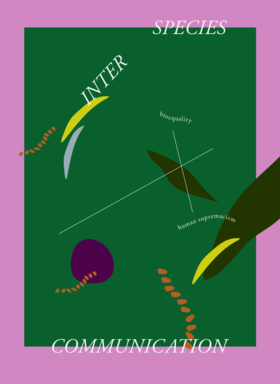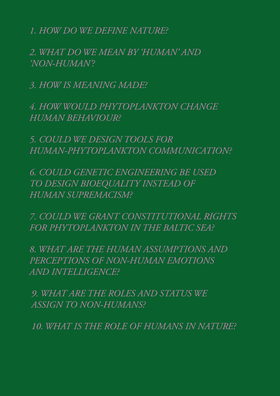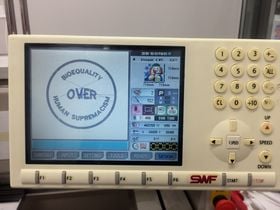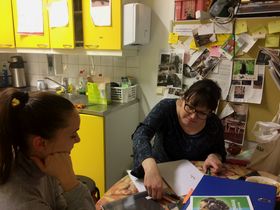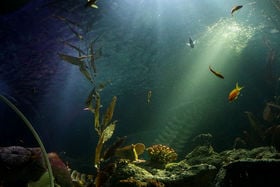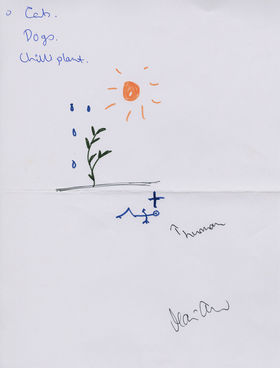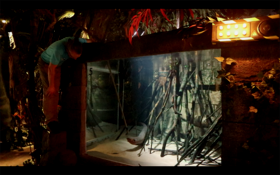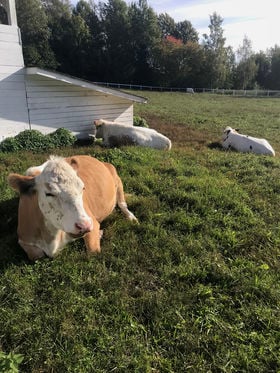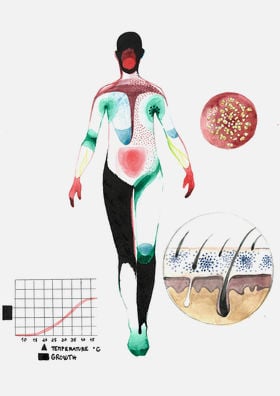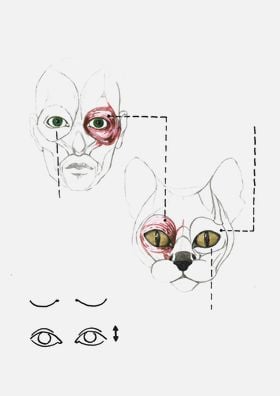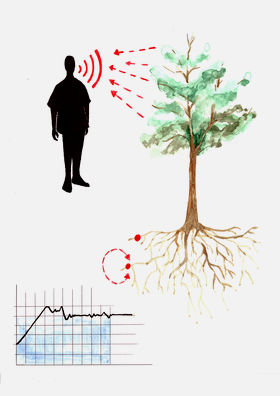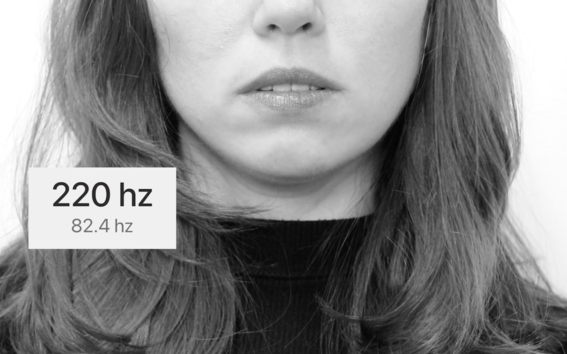
What is design if not for humans? What it would be like to design for non-humans? The project started with a discussion on how design need not revolve only around humans and this in turn became the basis of our research.
Our first step was to understand human-centred design, its problems, and benefits. What made us, as humans, view everything else as a resource? What brought on the shift where humans became superior as a species? Was it intelligence/ignorance, need/greed, or selfishness/convenience? Was it lack of empathy for anything that was not human or too much empathy for humans? These were the key questions and dilemmas that shaped the course for our project and research. A study into convenience culture and designing through ‘greed’ and not ‘need’, helped reinforce our commitment to designing for non-humans.
It soon became apparent to us that the first step towards 'more-than-human' centred design has already been taken. Anab Jain, the director of the London-based design studio Superflux, defines this new approach to design "as considering ourselves as deeply entangled with other species". During the talk she gave at IxDA Interaction 18 in Lyon, Jain also argues that we need to start considering ourselves as co-inhabitants instead of isolated makers.
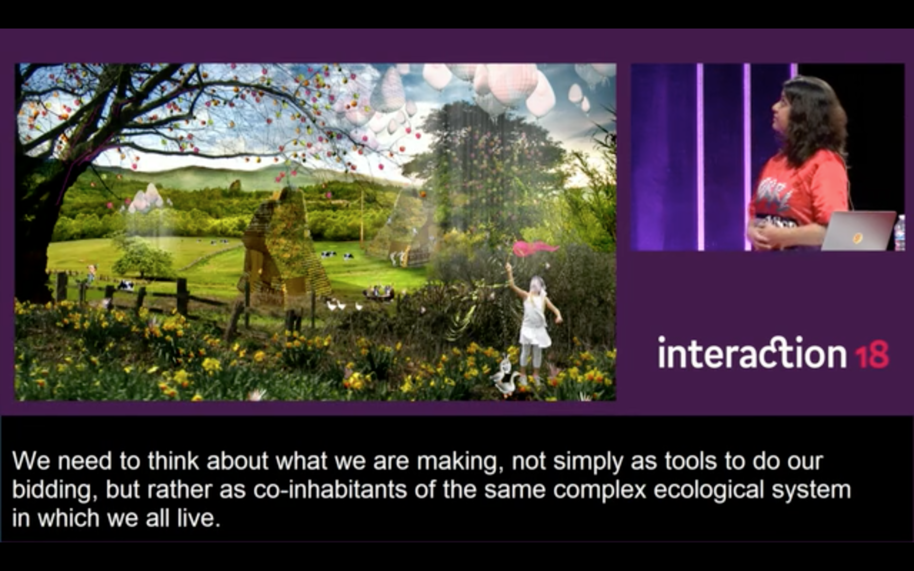
In order to visualise our field of inquiry, we discussed popular culture phenomenons as well as art and design projects in the context of ‘designing for non-humans’. This took place during a self-initiated cut and paste workshop. The discussions acted as a starting point for our research and also as inspiration for a collective collage.
The concept of ‘interspecies communication’ was developed during a workshop run by assistant professor Timo Rissanen from Parsons School of Design. We became interested in the somewhat controversial idea of speciesism that was popularised by the Australian philosopher Peter Singer in the 1970s. Singer defines it as an “attitude of bias against a being” based on its species or, in other words, non-human racism. We adopted this idea for our manifesto, which in turn led us to generate a set of research questions to help frame the project. In addition to interrogating our interests in genetic engineering, animal behaviour, and the role of phytoplankton in marine ecosystems, we went back to the basic questions. How do we define nature? What do we mean by ‘human’ and ‘non-human’?
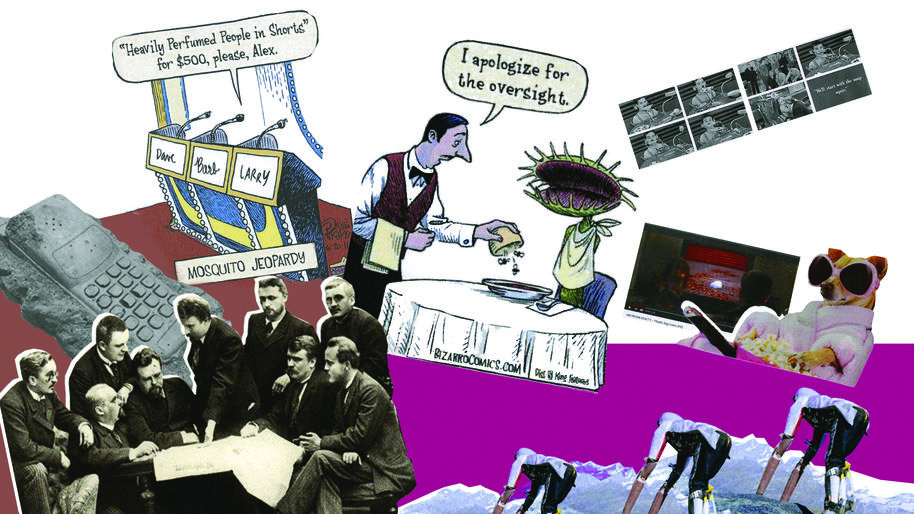
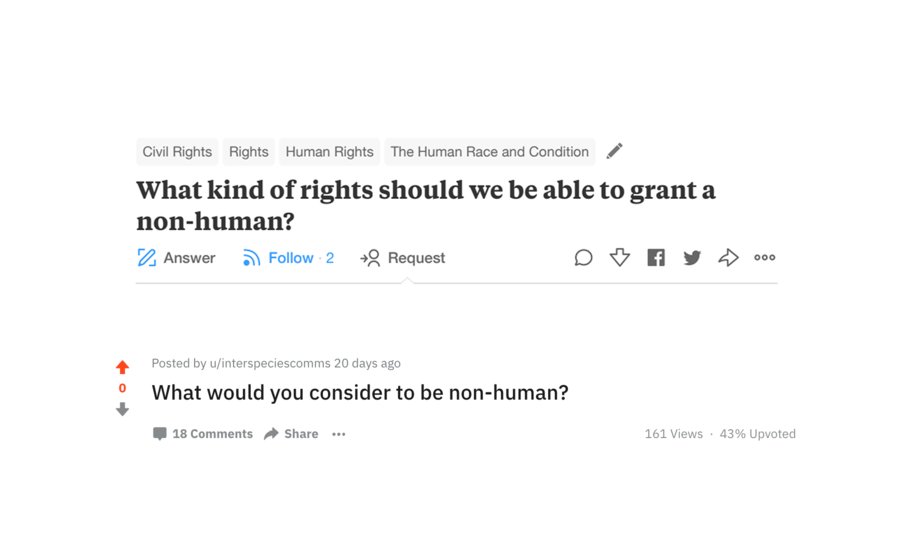
To continue with our research, we opened up the research questions to the public by starting threads on online forums such as Reddit and Quora. In addition to gathering information on a large scale, we started to investigate our relationship with non-human species by zooming in on a micro level. Inspired by Knotty Objects, the inaugural MIT Media Lab Summit, in 2015, MoMA’s senior curator Paola Antonelli had designed for us an exercise: we were asked to examine an object, in our case, a brick, for which conception, use, and misuse are non-linear.
The brick we were given was partly covered in mould and therefore to us it represented a habitat for microorganisms. We also discussed the meaning of the object from different cultural, historical and sociological perspectives. What is a brick? What does a brick mean? In order to communicate our findings, we shot a short film, where three different sequences of the video capture the brick as an infant. This personification of a brick served the purpose of humans identifying with microorganisms. In other words, we wanted people to be empathetic towards other species in a way they are towards human infants.
Although not having watched interactive artist Ayah Bdeir and architect David Benjamin’s short film Knotty Objects: Brick (2015) prior to the exercise, we later found interesting touching points. They argue, referring to bricks, that our world is now made out of parts: parts that can be removed, recycled, and recombined. Could communication, then, be also made out of ‘bricks’? Out of malleable pieces, that when added together, form meanings, systems, and behaviours as pointed out in the short film?
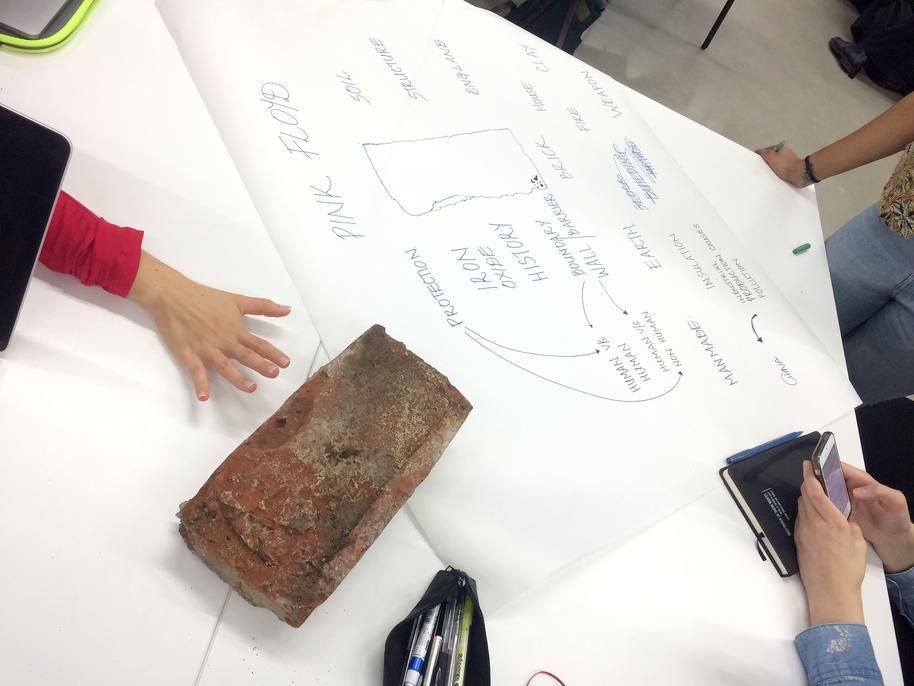
By visiting the HESY rescue centre, Korkeasaari zoo, and Sea Life aquarium we wanted to observe and document how, if at all, people interact with animals in these human-made environments. We were also interested in hearing what the people working with non-human species think about their methods of communication, intelligence, and role in our society at different organisations.
In addition to discussing the topic on a general level, we designed a 15 minute micro-workshop to engage people from different backgrounds to explore the topic of interspecies communication. We wanted to apply a method that is approachable, low-risk, and at the same time supports out of the ordinary ways of thinking. It was also important that one could participate in the workshop from almost anywhere, as we later moved onto also sharing it on social media channels and by e-mailing in order to gain both local and global insight.
In one of the tasks the participants where asked to imagine a world without verbal language and design a tool for communication between humans and non-humans in this context. We then took these ideas further by materialising them as watercolour illustrations. These spontaneous speculations on fictional tools led us to further research the possibilities of communicating with non-human species on a beginner level. How could we move from speculation to reality? We ended up learning about different communication tactics from the bee dance, a navigation choreography, to electric currents. As we began to look further, we soon realised that we had only started to scratch the surface of the interactions, interdependencies, and complexities between different species.
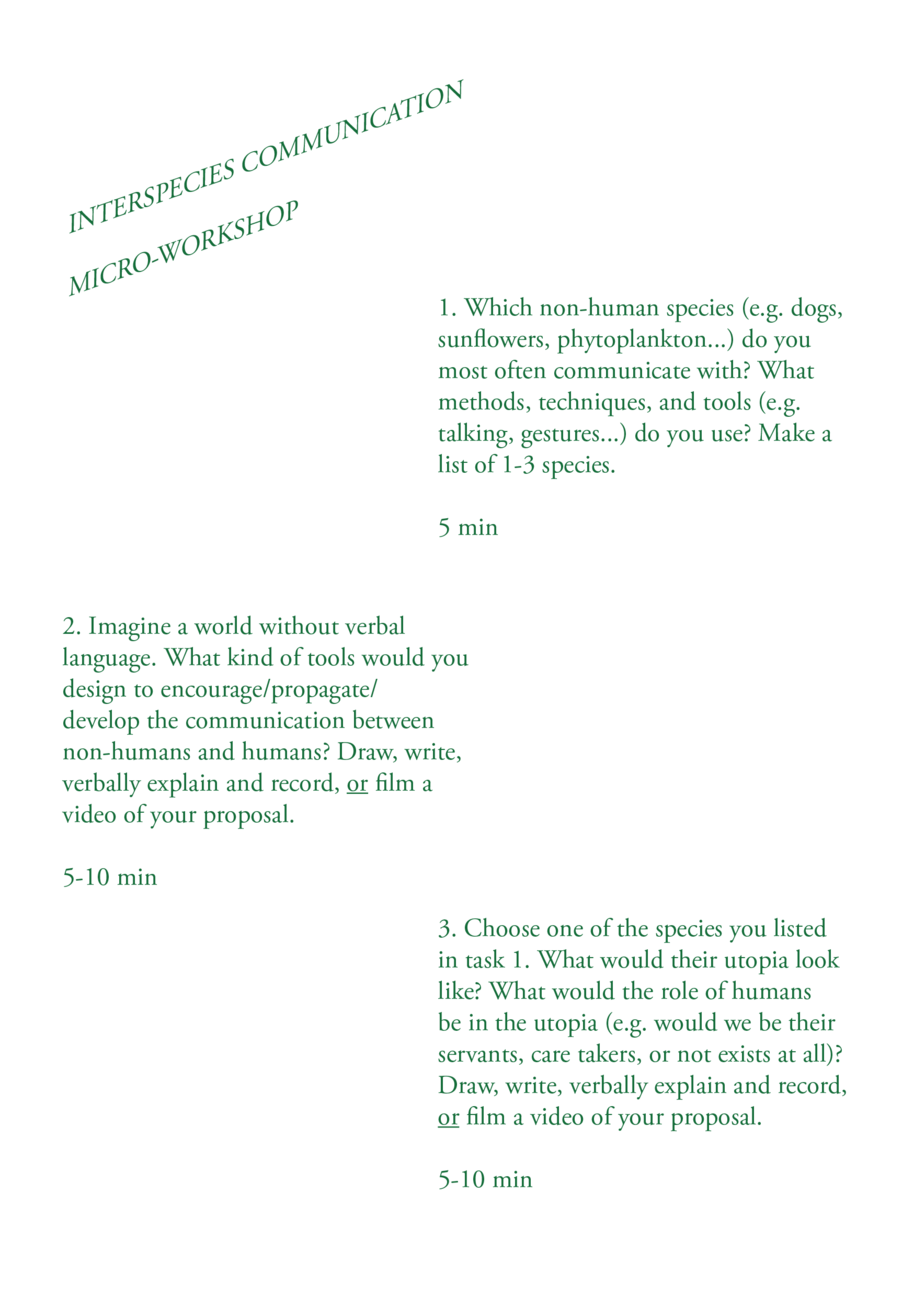
In order to identify starting points, we decided to focus on three exercises: humming for a plant at 220 hz, blinking in slow motion at a cat, and using light to interact with bacteria called staphylococcus homini often found living in armpits. This is because we wanted to work on different scales as well as with different groups of species. We based our designs on scientific research in order to move beyond subjective experiences. This is not to say that either rules out the other, but that the project is not about us as individuals. It should also be noted that within this field of research, similarly to many others, there are conflicting views, for example, in terms of the percentage of microbes in a human body.
Our outcome consists of three objects we designed based on the research: an educational tool in video format, a set of watercolour illustrations, and a publication called Discussions on interspecies communication. For us, it is important that these outcomes are based on active interactions with professionals working in different fields, as this helps to situate the designs in reality. They are not only speculations, but tools to be used in the everyday to effect change.
The educational tool works as an introduction to interspecies communication tactics for humans living in the age of polarisation. We call it ‘beginner level’, because to us, this project is about identifying starting points within our topic rather than coming to a final conclusion. The educational tool is supported by a set of watercolour illustrations that help to contextualise the concepts presented in the video. The publication functions as a medium for highlighting both the current thoughts and the future speculations on the topic of ‘interspecies communication’ as discussed by, for example, marine biologists, artists, researchers, and zoo keepers.
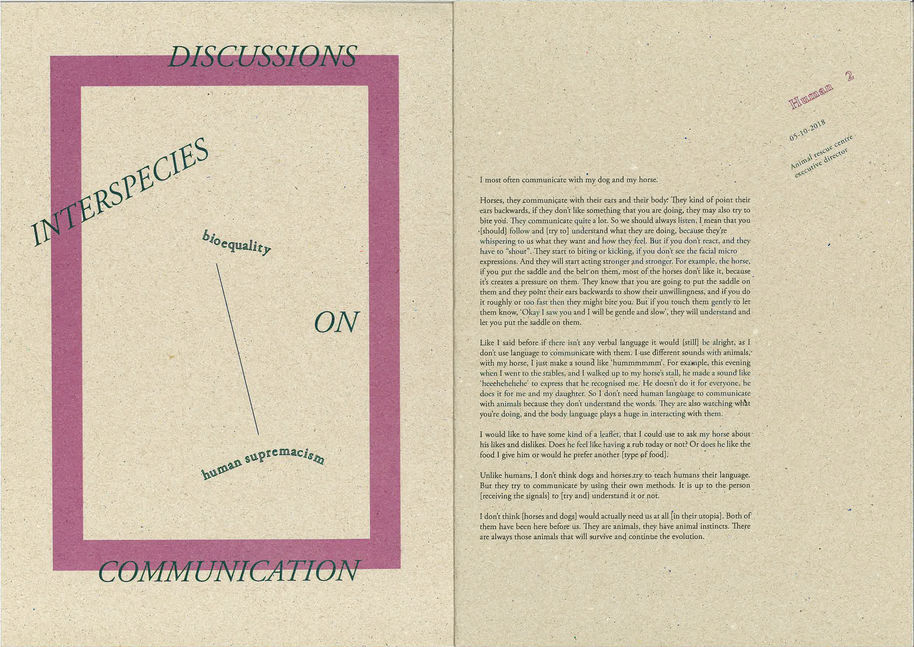
To be able to design for non-humans, it was important to delve into human empathy and understand the extent of it. The project aims to prompt the viewers to see their surrounding environments and their non-human neighbours in a new light. It is a doorway into empathy: it functions as a tool to enable people to discard a little of their humanness and begin to understand the communication tactics of non-human species.
The project is an experiment on humans as much as it is an experiment for non-humans.
Tzuyu Chen
Mithila Mohan
Aino Tuovinen
Zuzana Zmatekova
with a thank you to all the other humans and non-humans who participated in this project
References:
Biondich, K., 2017. Identification and characterization of Staphylococcus hominis. University of Alaska Fairbanks, [online] (28 April 2017) Available at: https://pdfs.semanticscholar.org/2158/ea7ca32f4fca6d29ebba5658ef46fb4608e4.pdf.
Blake, C., Molloy, C., and Shakespeare, S., 2012. Beyond human: from animality to transhumanism. London; New York: Continuum. p. 312
Booth, R., 2018. Majority of Britons think empathy is on the wane. The Guardian, [online] (4 October 2018). Available at: https://www.theguardian.com/society/2018/oct/04/increasing-number-of-britons-think-empathy-is-on-the-wane.
Bowditch, T., 2016. GoatMan, [image online] Available at: http://www.thomasthwaites.com/a-holiday-from-being-human-goatman/.
Brecht, M., Freiwald, F., A., 2012. The many facets of facial interactions in mammals. Current Opinion in Neurobiology, [e-journal] 22:2, pp. 259-266. DOI: https://doi.org/10.1016/j.conb.2011.12.003.
Collen, A., 2015. 10 % human: how your body’s microbes hold the key to health and happiness. London: William Collins. pp. 2-3
Duignan, B., 2018. Peter Singer. Encyclopædia Britannica, [online] (last updated: 28 September 2018) Available at: https://www.britannica.com/biography/Peter-Singer#ref921522.
Gaukel Andrews, C., 2015. Research shows plants are sentient. Will we act accordingly? Good Nature, [online] (7 April 2015) Available at: http://goodnature.nathab.com/research-shows-plants-are-sentient-will-we-act-accordingly/.
Gallagher, J., 2018. More than half your body is not human. BBC, [online] (10 April 2018) Available at: https://www.bbc.com/news/health-43674270.
Ginsberg, D., 2014. Transgressing biological boundaries. In: Ginsberg, D., Calvert, J., Schyfter, P., Elfick, A., and Endy, D., eds. 2014. Synthetic aesthetics: investigating synthetic biology’s designs on nature. Cambridge, Massachusetts; London: The MIT Press. Ch 18
Jain, A., 2018. More-than-human centred design. IxDA Interaction 18, [online] (8 February 2018) Available at: https://interaction18.ixda.org/program/keynote--anab-jain/.
Krznaric, R., 2015. Can you teach people to have empathy? BBC, [online] (29 June 2015) Available at: https://www.bbc.com/news/magazine-33287727.
Krznaric, R., 2012. Six habits of highly empathic people. Greater Good Magazine, [online] (27 November 2012) Available at: https://greatergood.berkeley.edu/article/item/six_habits_of_highly_empathic_people1.
Marder, M., 2013. Is it ethical to eat plants? Parallax, [e-journal] 19:1, pp. 29-37. DOI: https://doi.org/10.1080/13534645.2013.743291.
MIT Media Lab, 2015. Celebrating the chimeric nature of design. Medium, [online] (8 July 2015) Available at: https://medium.com/mit-media-lab/the-summit-9a632339f56c.
MIT Media Lab, 2015. Knotty Objects: Brick. [online] Available at: https://www.youtube.com/watch?v=No7kVIA95Ak.
Modern Times, 1936. [film] Directed by Charlie Chaplin. USA: Charlie Chaplin Productions.
Movieclips, 2011. The dancing bag: American Beauty, [video online] Available at: https://www.youtube.com/watch?v=tB0th8vNLxo.
Piraro, D., 2016. Mosquito Jeopardy, [image online] Available at: https://cdnmarquee.comicskingdom.com/system/blog/feature/15/2016-06-bz-panel-06-20-16.jpg.
Piraro, D., 2011. Venus fly trap, [image online] Available at: http://2.bp.blogspot.com/-9PMIPShG2sk/Tt6FszaWl5I/AAAAAAAABMI/PLKvM3y3LKY/s400/bz-panel-12-10-11-Venus-Fly-Trap-WAYNO.jpg.
Singer, P., Yancy, G., 2015. Peter Singer: on racism, animal rights and human rights. The New York Times, [online] (27 May 2015) Available at: https://opinionator.blogs.nytimes.com/2015/05/27/peter-singer-on-speciesism-and-racism/.
Society for General Microbiology, 2015. Bacterial genetic pathway involved in body odor production discovered. Science Daily, [online] (30 March 2018) Available at: https://www.sciencedaily.com/releases/2015/03/150330213947.htm.
Turnbaugh P. J., et al. The human microbiome project. Nature, [e-journal] 449, pp. 804-810. DOI: 10.1038/nature06244.
Wohlleben, P., 2015. The hidden life of trees: what they feel, how they communicate; discoveries from a secret world. Vancouver: Greystone Books. pp. 8-13
Woodward, W., 2008. The animal gaze: animal subjectivities in southern African narratives. Johannesburg: Wits University Press. p. 208
- Published:
- Updated:
